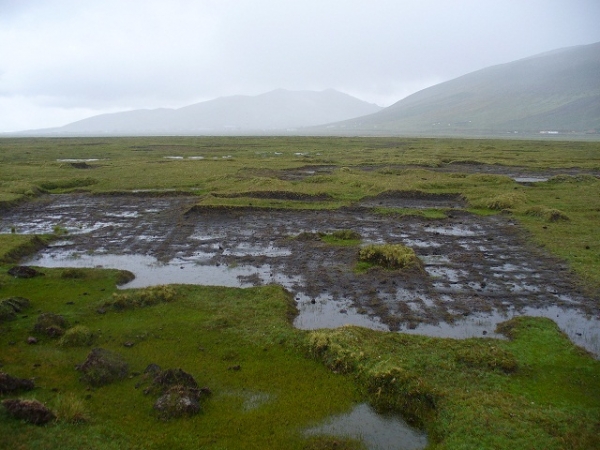Lake Junín: protection and sustainable use of high Andean ecosystems

More efficient cooking stoves were designed for communities around Lake Junín as a way of encouraging a better use of the high Andean peatland, or champa, an important habitat for migratory birds. Certified models of the cooking stove, adapted to local conditions, were built by members of the Management Committee and the local community. To date, 30 cooking stoves have been given to members of the community who are committed to the conservation of the area. The experience has been very successful and many more inhabitants expect to receive the stoves. The effects of the 30 new stoves on the use of thechampa are yet to be evaluated quantitatively, however, a reduced use of this ecosystem has been perceived, given that these 30 families now extract less peat for cooking.
Lake Junín – importance for human wellbeing
Lake Junín, also known as Chinchaycocha, is located in the Central Andes of Peru at more than 4100 m above sea level. It was declared a protected area in 1974 with the aim of protecting and conserving its wild flora and fauna, as well as its scenic beauty. It was recognised as a Ramsar site in 1997, and as an Important Bird Area (IBA) in 2008.
The wetland provides habitat to important populations of threatened, endemic and migratory birds, including the Critically Endangered Junin Grebe Podiceps taczanowskii,the Endangered Junin Rail Laterallus tuerosi, and migratory species such as Blue-winged Teal Anas discors, Peregrine Falcon, Falco peregrinus, American Golden PloverPluvialis dominica, Lesser Yellowlegs Tringa flavipes, Wilson’s Phalarope Steganopus tricolor, Baird’s Sandpiper Calidris bairdii and Greater Yellowlegs Tringa melanoleuca.
Junín National Park, including the lake’s ecosystem, is not only recognised for their beauty, but also for the resources and services provided to the local community, region and country. One of the most important is providing water for the largest reservoir in the country, responsible for 50% of electricity generation in the country. However, due to demands of the current economy, natural resources in Junín have decreased, and their unsustainable exploitation has negatively affected the quality and quantity of resources at the site.
Peat, or champa is used as energy to cook or heat homes among the local communities inhabiting the area around Lake Junín. Its extraction is regulated by the local administrative body of the protected area and extraction is performed once a year, in an intensive campaign at certain sites. However, poor practices can cause the loss of grassland and soil, and reduce the land’s capacity for rearing livestock, with detrimental effects on the local peasant economy. The resulting change in land cover also represents a loss of habitat for migratory and resident birds.
Therefore, part of the activities within the projects funded by the U.S. Fish and Wildlife Service Neotropical Migratory Bird Conservation Act and the Aage V. Jensen Charity Foundation, aim to create a programme which not only provides alternatives for grassland conservation and integrated management, but also reduces the impact of poor resource management, offering viable economic alternatives to the local peasant communities. Agreements and training programmes have been established with local communities to create recovery areas for champa, and reduce the area under exploitation, given the implementation of more energy efficient alternatives, such as the improved cooking stoves.
The improved design of the new cooking stoves not only provides a way to reduce peat consumption by approximately 50%, but also reduces gas emissions, therefore decreasing air pollution and respiratory illnesses.
Working together with National Park personnel, awareness has been created among the community on the sustainable use of champa. Support was also provided to the community to help them follow existing regulations surrounding the use of peat. These activities could not have been achieved without a complementary environmental education programme, and with the collaboration of the peasant communities, who played a vital part in the construction of the new cooking stoves.
The next stages of the project at Lake Junín include a review of the region’s Contingency Plan by the Local Management Committee, using information compiled in another project on endemic and migratory species. This plan establishes guidelines for priority conservation actions at the lake, with special emphasis on the Junin Grebeand Junin Rail.
- More information on the project:
Alan Chamorro alan_chc@ecoanperu.org or afredd@hotmail.com Project Coordinator, Asociación Ecosistemas Andinos – ECOAN
Constantino Aucca Chutas caucca@ecoanperu.org President, Asociación Ecosistemas Andinos – ECOAN

Facebook comments